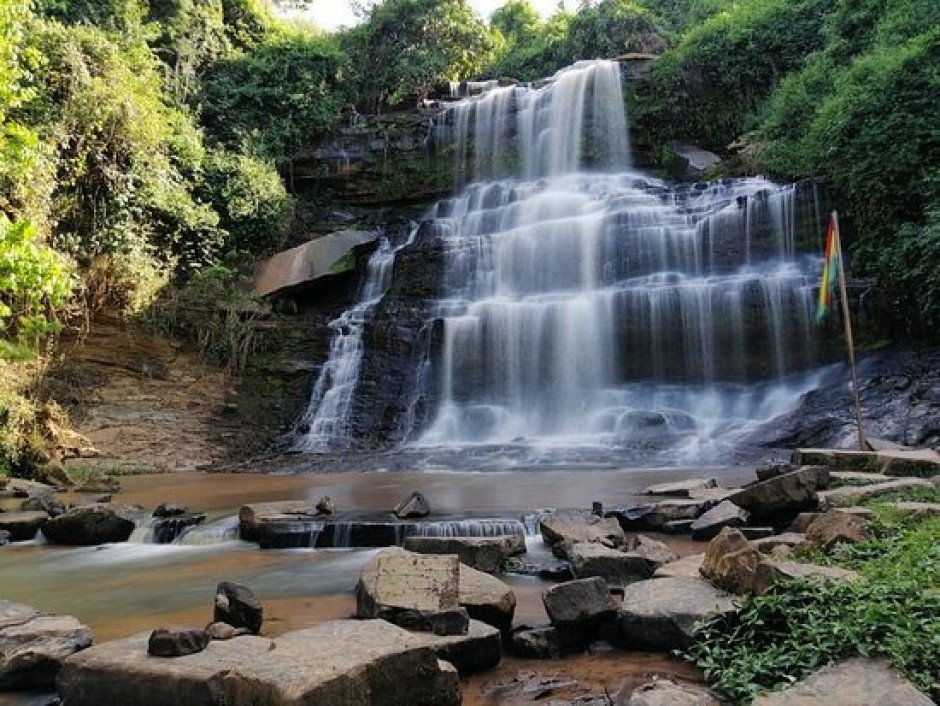Akatekyi Crocodile Pond: A Place...
September 29, 2025
Established on 14 April 1959, Brong Ahafo emerged from the amalgamation of the Western Ashanti regions, drawing its name from the predominant ethnic groups – the Brong and Ahafo. Sunyani, a city steeped in history, served as the capital, becoming a nucleus for cultural, economic, and administrative activities. However, in 2019, the region underwent a significant transformation, splitting into Bono, Bono East, and Ahafo regions, marking the end of an era for Brong Ahafo.
Economy and Tourism
Brong Ahafo's economic landscape was marked by extensive cocoa production and a thriving agribusiness sector. The region's attractions, though less known than some, were diverse and captivating. Kintampo, with its mesmerizing waterfalls, and the Boabeng-Fiema Monkey Sanctuary in Fiema were among the cultural and wildlife gems. Additionally, the national parks of Bui and Digya showcased the region's commitment to preserving its natural heritage.

Education played a pivotal role in Brong Ahafo, with institutions such as the University of Energy and Natural Resources, Catholic University College of Ghana, and Sunyani Technical University contributing to knowledge dissemination and skill development. Notably, Paul Yeboah's Ghana Permaculture Institute in Techiman played a vital role in promoting sustainable practices for stable food systems.
Physical Characteristics and Demographics
Spanning 39,558 km2, Brong Ahafo was the second-largest region in Ghana. Its geographical features included a mix of forest, transitional, and savanna zones, reflecting the region's diverse ecosystems. With a population of 2,282,128 (2010), the region experienced a growth rate of 2.2%, contributing significantly to Ghana's demographic landscape.
Climate and Agriculture
The region's climate, characterized by high temperatures and a bi-modal rainfall pattern, influenced its agricultural practices. The arable land, covering 60% of the region, played a crucial role in crop production, livestock farming, and agro-processing. The region's dedication to sustainable agriculture was evident in initiatives like the Permaculture Institute and the presence of numerous agricultural institutions.

Sports and Notable Personalities
The region gained recognition for producing elite athletes who left an indelible mark on the sports world. Icons like Asamoah Gyan, Emmanuel Agyemang-Badu, and John Paintsil hail from Brong Ahafo, showcasing the region's prowess in sports. Aduana Stars F.C., Berekum Chelsea F.C., and Bechem United F.C. added to the region's sporting vibrancy, making their mark in the Ghana Premier League.
Districts and Notable Citizens
The Brong Ahafo region comprised 27 districts, each contributing to the region's unique fabric. Notable citizens, including Matthew Nkum, Kevin-Prince Boateng, and Kwadwo Afari-Gyan, hailed from various regional settlements. The diversity of ethnic groups, such as the Brongs, Ahafos, Gur-speaking people, and others, coexisted harmoniously, epitomizing the region's warm and peaceful nature.
Though the Brong Ahafo region has evolved into Bono, Bono East, and Ahafo, its legacy endures through its cultural, economic, and educational contributions to Ghana's growth. As the new regions forge their paths, they carry the spirit of Brong Ahafo, a region that thrives in unity, diversity, and resilience.
September 29, 2025
September 29, 2025
September 26, 2025
September 18, 2025
September 18, 2025
September 4, 2025
September 3, 2025
August 28, 2025
August 19, 2025
August 8, 2025